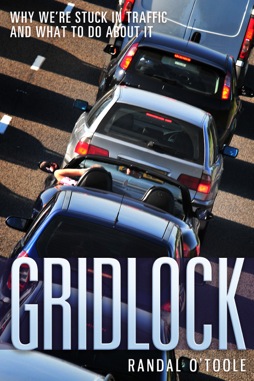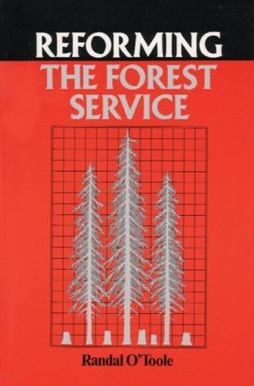Scientific American blames the Los Angeles fires on climate change. A Yale University publication agrees. An article in Quartz predicts that climate change is going to make housing “uninsurable.” Instead of insurance, a New York Times op-ed by a former California insurance commissioner argues that oil companies should be forced to pay for fire damages.
The Palisades Fire on the evening of January 7. Photo by Toastt21.
It’s a neat argument that appeals to homeowners eager to blame the loss of their houses on anything other than their own decisions to buy or build flammable homes with flammable landscaping in a fireplain. Yet there are valid reasons to believe that climate change is not the issue, and that even if climate change is occurring, it won’t make homes uninsurable. In fact, people who believe climate change is the problem should be all the more interested in making sure that homes and landscaping are fireproof.
A key weakness in most of the arguments for anthropogenic climate change is that they rely on data that goes back only about 55 years or so. The 1970s were one of the coolest decades in the 20th century, so any data that start from there will make it appear that temperatures are rising. The Yale article cites one study that uses data back to 1971 and another that goes back to just 2001.
Both of those studies are also not of climate change but of fire data, but that’s problematic because the Forest Service and other wildland fire fighting agencies dramatically changed how they fight fires since the 1990s. Where they once risked firefighter lives by having them directly attack the fire fronts, they now do huge amounts of back fires and rely more heavily on aerial drops of water and retardant. This, not climate change, has increased acres burned and the sizes of the largest fires. Acres burned are a symptom of climate change, but they can also be a symptom of other factors as well.
Relying on actual climate data, rather than symptoms, climatologist John Christy has shown that heat waves in the West, the number of days over 100 degrees in California, and southern California rainfall have not particularly changed over the last 110 years. If anything, some of these indicators have cycled up and down, with the 1970s, as mentioned above, being a cool, wet period.
Even if you believe that climate change is the problem, blaming the oil companies is the wrong answer. For one thing, the oil that has been burned over the past century was burned by us, not the oil companies, who only sold it to us. More important, as Bjorn Lomborg showed in the Financial Post last week, recent studies have estimated that climate change is going to reduce global GDP by only 2 to 3 percent, while the actions climate activists want os to take to slow climate change will reduce it by 25 percent, both increasing poverty and making us less resilient to any changes that come about as a result of increased temperatures.
As I’ve noted here before, the main reason I am suspicious about the whole climate narrative is that most of the things that activists want us to do, such as spend more on mass transit or increase urban densities, won’t really reduce greenhouse gas emissions and are simply part of an agenda that existed long before climate was thought to be a problem.
At the same time, many climate skeptics are instead blaming fires on a lack of timber cutting. Edward Ring, of the California Policy Center, has proposed “sweeping reforms” to “deregulate the activities of timber harvesting, mechanical thinning, grazing, and controlled burns.” A bill has been introduced into the Oregon legislature to increase timber cutting on state lands “so we don’t burn like California.” As I’ve described here before in detail, these naive proposals fail to understand forest fire ecology and the role of forest management.
First, fuel treatments can reduce fire hazards only in forests that naturally undergo frequent light burns. A 2002 Forest Service report showed that this applies to 80 percent of Southeastern forests but only 40 percent of forests in the West. Significantly, almost none of those forests are managed by the Oregon Department of Forestry or are in southern California. Neither the 2025 Los Angeles fires nor Oregon’s 2020 Labor Day fires that burned hundreds of thousands of acres in a few hours would have been slowed one bit by timber harvests, thinnings, grazing, or controlled burns.
Second, that same 2002 report found that only 38 percent of western forests have been so altered by decades of fire suppression that they need any fuel treatments. Since 38 percent of 40 percent is about 15 percent, only 15 percent of western forests could benefit from fuel treatments in 2002.
As it happens, while this 2002 report was being prepared, Congress massively increased federal budgets for fuel treatments. The amount of money spent on fuel treatments increased by 10 times and since then roughly 40 million acres of national forests and a comparable number of Department of the Interior lands have been treated. If these treatments were targeted to the acres that needed them most (which admittedly they weren’t), that would have been enough to do all of the 15 percent that could benefit from them. Yet all of these treatments have not made so much as a dent in wildfires since that time.
Finally, even if all fuels were treated and the Forest Service and other agencies were still cutting as much timber each year as they did before 1990, it wouldn’t have stopped the 2020 Oregon fires or 2025 Los Angeles fires. Like many fires before them, these fires were driven by 50- to 100-mph winds blowing burning embers for miles away from the source of the fires. The only sure way to protect homes and other structures from fires is to fireproof the homes and landscaping around those homes.
As for insurance, a recent in-depth look at insurance costs found that per-capita, inflation-adjusted insurance premiums have doubled since 1990, but most of that rise appears to be due to the growing size of homes and increased construction costs. A major reason for the increase in construction costs is the urban-growth boundaries that have limited land available for housing. Since these have increased the costs of housing, the cost of labor required to build new homes had grown by 40 percent as of a 2002 study, and it would be much more since then.
Insurance company profiteering isn’t the problem, as “homeowners insurance profitability is extremely low” and any increase in profits “doesn’t explain more than a tiny sliver of the increase” in rates. Nor is increased wildfire an issue, as half the increase in insurance claims between 2005 and 2020 is from wind and hail events, a third is water damage (from frozen pipes, not floods as they typically aren’t covered in homeowners’ insurance), while only 10 percent is fire — and most of that probably isn’t related to wildland fires as only a small percentage of house fires are caused by wildland fires.
A bigger problem for insurance, which was mentioned only in passing in the above analysis, is state regulation of insurers. California limited the ability of insurers to adjust rates on homes in higher risk areas, leading some insurers to simply leave the market. A 2017 Florida law allows attorneys winning lawsuits against insurance companies to charge two to two-and-one-half times their normal billing rates, this incentivizing a massive increase in lawsuits. This may be why wind-related insurance claims increased so much between 2005 and 2020.
One important fire policy change should be made. Traditionally, if a fire starts on someone’s land and it spreads to someone else’s land, the owner of the land where the fire started is responsible for the costs. This should be changed so everyone is responsible for their own land. If a forest landowner believes thinnings and controlled burns can reduce fire hazards, they can do them on their land. If someone wants to protect their home from fire, they should fireproof their home and landscaping, not rely on the government to protect it or to manage adjacent lands. Any proposals that make the fires someone’s problem other than the landowners and homeowners themselves are irresponsibly allowing people to continue to build fire-prone structures in fire-prone landscapes.









Wonderful, comprehensive, balanced post! Thank you! Is it possible to see the entire document from which you pulled the individual Christy charts? Thanks, Glenn Mercer (mercer.glenn@gmail.com)
You Can’t divert an entire ecosystems water supply, watch it dissappear down drain and say, Huh, where’d water go. These fires aren’t land use or climate change, they’re arson. In 2023 91% states wildfires were arson or negligence. We already have security and phone footage of people setting fires in dumpsters, parks , wooded areas. Many committed by illegals.
2nd culprit is California did NOTHING to bolster it’s water supply needs.
Climate change didn’t cause the 2020 Oregon fires. Arsonists did.
GlennMercer,
Sorry, those were the best charts I could find. They were based on a presentation Christy gave in Orange County, but I haven’t found the original presentation on line. You can find other articles by Christy on line including this one.
Tumalo Joe,
Most if not all of the 2020 Oregon fires were caused by lightning weeks before they became fire storms on Labor Day. I was there when they happened. The one exception was the Holiday Farm Fire, which may have been caused by power lines. Neither lightning nor power lines are arson.
Thanks to GlennMercer for finding better images of the charts referenced in this post. I’ve updated the links to those images.
“Most if not all of the 2020 Oregon fires were caused by lightning weeks before they became fire storms on Labor Day.”
Not most. Some. According to ODF, “Through July [2020], humans…caused 90% of fires…in Oregon.”
My comment was referencing the fires in Clackamas County and the Rogue Valley, including the Alameda Fire that burned 3,000 acres and destroyed 2,800 structures, the most of any fire in Oregon in 2020. It displaced several of my friends. Those fires, which had the highest impact on populations, were human caused; one arsonist has been sentenced, and while the Alameda fire is unsolved, arson is suspected.
In Clackamas County, the Beachie Creek Fire, which is listed as “unknown” origin (read: human caused, probably arson), burned the second most number of structures and the second most acreage. Don’t you remember the news story about a woman who held an attempted arsonist at gunpoint in Clackamas County until authorities could arrive? Of course, Facebook censored those reporting political groups were starting the fires, just as they removed opinions that COVID escaped the Wuhan lab.
Guess it’s all down the memory hole now, and we can just say these devastating fires were caused by lightning.
Seems I remember learning in school that the Native Americans would use controlled burns in forest lands. Even more-primitive (in some respects) cultures understood the need to steward the land rather than allow nature run wild and turn destructive.
Arkansas Toothpick, that’s a gross oversimplification, and it’s also an appeal to the “Noble Savage” stereotype.
There were more than 500 cultural groups in North America pre-contact, and some used fire.
And when they did, it was hardly scientific or controlled.
Around 1800, oral tradition and fire scars indicate the Cowlitz tribe started a fire that burned more than 250,000 acres between Mount Rainier and Mount St. Helens. They may have ignited it to attack the Nisqually people, or it may have started it because they thought it would bring rain during a drought (obviously caused by climate change).
History is replete with examples showing the stereotype of Indians as “stewards of the land” is hokum. They were human. Like all humans, they affected the land in ways that can be considered detrimental.